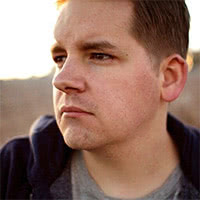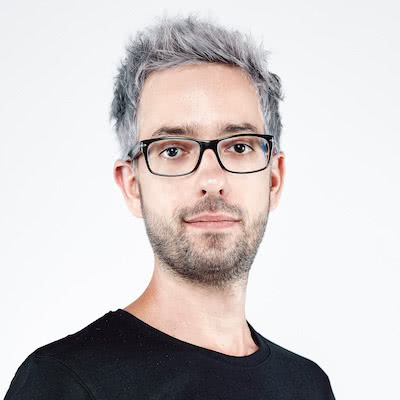To all those don’t meet you yet. How do you describe yourself?

I’m an independent graphic designer and frontend web developer based in Brighton, England. I help responsible organisations like the Guardian, UNICEF and Mozilla create purposeful digital products.
When you started developing, what were some common mistakes you made along the way?
A mistake I made when I started, and one I continue to make, is to forget that the best way to solve a tricky problem is to step away from it, and focus on something else. Time and time again, I will spend hours trying to fix a bug or get something to work, but to no avail. Only when, in frustration, I divert my gaze from the screen (go for a walk, do the washing up, have a shower), does the solution usually come to me.
Frontend seems to be easy until you start to learning. How do you face the challenge of learning new things?
The best way to learn a new skill is to have a project for which you can apply the resulting lessons. Everything I’ve learnt has been done in pursuit of building something, be it a personal project or a client’s website. Reading endless documentation, or coding something in the abstract, rarely excites me.
What would you qualify as the top problems facing developers today?
There’s a tendency to focus on new specifications, frameworks, libraries and techniques, but this is often at the expense of understanding the more foundational aspects of the web. That an approach like progressive enhancement — necessary given the unpredictable and hostile nature of the medium — should be considered controversial by some, beggars belief.
How would you recommend somebody to start learning web development?
Having your own website is a great place to start. There’s little risk in doing so, no pressure of deadlines or client expectations and, assuming you include a blog, you can document your findings as you go.
What are the things you would have known when you first started?
Hmmm, good question! Probably a recognition that the most effective design comes from properly communicating with clients; understanding their needs, setting expectations, ensuring the right level of involvement etc. No matter how beautiful a piece of work, it won’t stand a chance in the real world if it was designed in a bubble.
When starting a new project, if you feel stuck where do you look for inspiration?
I’m always on the look out for interesting examples of design, particularly those outside the realm of screen design. I have boxes full of pamphlets, leaflets, postcards and brochures that I’ve collected over the years. Design exhibitions and events are also useful, and all seem to reaffirm my own stylistic preferences; minimal, modernist, timeless.
What was your first development job and how you faced it?
My first job was at a small web design agency, primarily building websites for local estate agents. This presented me with an opportunity to build my first commercial website using web standards and CSS for layout. I spoke about what happened next a few years ago, and you can read the transcript here.
What was the most challenging project you ever faced and why?
The most challenging projects tend to be those that involve extending or adapting code that’s been written by somebody else. Doing so serves as a useful reminder for me to ensure the code I write includes sufficient documentation and avoids needless complexity.
Can you describe your workflow when you create HTML, CSS and JavaScript from scratch?
Be it HTML, CSS or JavaScript, I tend to start from the most basic representation first, and then build up. For markup, I start with plain text. For CSS, I start with the basic aspects of the design system (font sizes and styles, colours etc), postponing layout concerns to later in the build. I don’t write much JavaScript, but a friend once recommended writing new functions by writing pseudocode first, which follows the same approach.
What excites you most these days?
Trained as a graphic designer, and enjoying a career as a frontend web developer, it’s where these two disciplines intersect that I find most interesting. It was this that inspired my recent article on 24 ways.
What is the most important thing you’ve learned?
Not sure if I’ve entirely learned this lesson, but one of my favourite pieces of advice is from Jason Fried. When wanting to give your opinion on something, give it five minutes.
Do you have any favourite books, videos, or resources that you could share with the readers?
I find the links posted by Jeremy Keith to be a useful means of keeping up-to-date with the goings on in frontend development. As to design, while I don’t do that much identity design myself, Brand New remains one of my favourite blogs.
Do you have any advice for new developers just starting their career journey?
I’d encourage people to follow your lead, Ignacio! Don’t be afraid to reach out to those already in the field and ask for help, advice and guidance. One of the greatest aspects of this industry — and one I hope we can maintain — is that of openness and friendliness.
What can we expect from Paul in the future? Anything you want to share?
I’m hoping this year will see me have more time to spend on a somewhat neglected side-project: Bradshaw’s Guide. It’s a digitised version of a victorian railway travel guide, but I’ve only transcribed the first of four sections, so far. I’d like to add the remaining three sections, as well as update its design and revisit my implementation.
